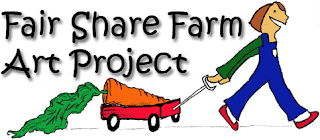As this season winds down, we are looking forward to a good harvest, and full shares the rest of the way. The winter squash continues to come out of storage and into your kitchen, and if the weather continues to cooperate, lots of fresh green vegetables are to be harvested from the field.
This week you will see some nice acorn and butternut squash in the shares. There are two types of acorn; the familiar green type and a verigated variety called Carnival. They are one of the simplest vegetables to cook and eat, as this recipe demonstrates.
Baked Acorn Squash
One nice thing about acorn squash is that when you cut it in half, you have an edible bowl. Bake it, and all you need is a spoon to eat it. Cutting them in half at the start is the hardest part. It sometimes helps to stab the squash and slowly work the knife through it, rather than trying to cut it in half like an onion.
Ingredients:
2 acorn squash
olive oil
sorghum, honey, or maple syrup
salt
butter
Method:
– Cut the squash in half, from stem to base. Scoop out the seeds (save to roast if you like).
– Poke with a fork or paring knife 25 times to tenderize.
– Wipe each squash with a small amount of olive oil (I just rub it on with my hands).
– Drizzle about 1 tsp of sorghum, honey, or maple syrup on each. Add a small piece of butter to each. Sprinkle with salt.
– Bake at 350 deg F for 40 to 50 minutes, or until tender and golden brown on top.
The options for how to “baste” the squash when roasting are many. Sage is a good herb to flavor squash. Goat cheese adds even more creaminess to the dish. What have you tried?
Bulk List
Don’t forget to check out this week’s bulk list. We have extra beans, okra and hot peppers.






